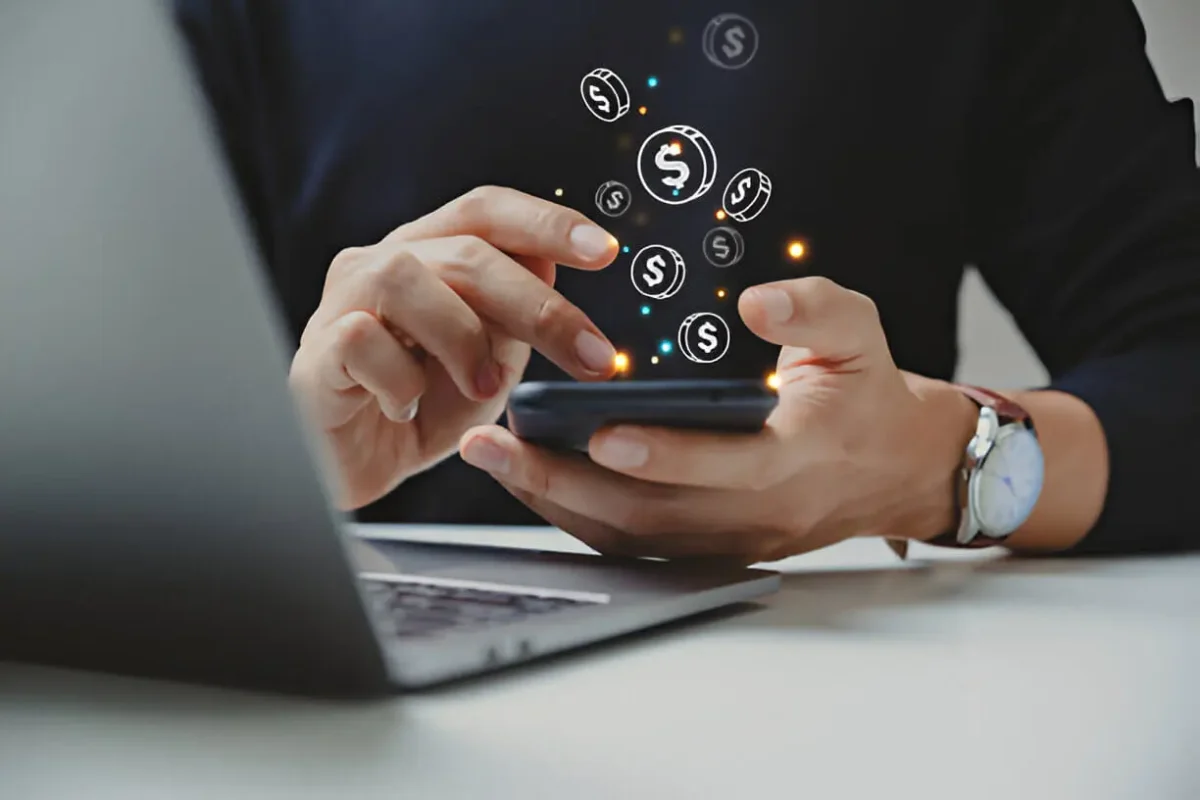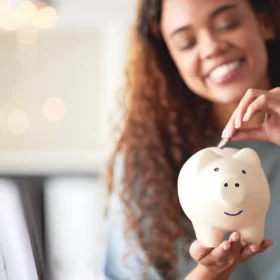We’ve been talking about budgeting and saving — and having a bank account is one of the most reliable ways to do that.
Your parents most likely have their own bank accounts, and no doubt you’ve used their credit card on more than one occasion. But have you ever wondered how these cards and accounts work?
How do you manage your money when you don’t even have it in hand? And what does a bank get out of keeping your money safe?
Understanding how bank accounts work is important for you and your future. At any rate, you will need an account when you enter the workforce (if you don’t already work outside the home).
The way you manage your finances will affect your credit score (more on that later). And this, in turn, will affect whether banks will be willing to lend you money, for example.
Much of that might have confused you just now. So, let’s just take it one step at a time. We will start with a basic understanding of what bank accounts are and how they work.
All About Bank Accounts
When you open up a bank account, you establish an agreement with the bank. The account lets you store money in digital form.
You can then transfer this money digitally to someone else’s account (such as by making a debit or credit card payment), or you can convert it into hard cash by withdrawing it from the ATM.
Why give your money to a bank when you can just keep it on you as cash? Well, for one, cash can be stolen much more easily.
It is also easy to misplace or lose your cash, and once it’s gone, it’s gone. There is no way to recover it. While you should also avoid losing your credit card, you can still protect your account and money even if that happens.
Moreover, many businesses now prefer to operate without needing to deal with large amounts of cash. Your place of work, for example, can directly transfer money into your account. And you can just use your card to buy coffee instead of worrying about having enough cash on hand.
Plus, banks have safeguards in place to prevent unauthorized individuals from accessing your account or using your cards. Random people cannot just pick up your card and go on a spending spree.
How a Bank Account Works
I will try to make this as simple as possible, but I’m going to get a little technical here, so buckle up. How do banks and the banking system work? You open up an account, which is assigned to you by a unique number. You then deposit money in this account.
You can do this by giving cash to your bank, which would then be deposited digitally into your account. That is where your money remains, and you can use it for whatever expenses you wish.
The bank, on the other hand, makes use of the money from deposits to give loans to other people or businesses. But this doesn’t mean your money is gone. It’s still there, but it rotates around as a bank operates.
The interest the bank gets from those loans — which is a percentage of the loan that borrowers have to pay on top of their monthly repayments — is how the bank earns a profit.
Those repayments make it back into your account. For certain types of accounts, such as savings accounts, the bank will also give you a percentage of the interest payments they receive.
But this will be a smaller percentage, as they still have to make a profit. Banks also often charge fees for some of the services they provide.
Types of Banks and Accounts
There are many different types of banks based on the functions they perform. These include:
- Central banks: They oversee the financial policies used throughout the country by other banks and manage the country’s money supply.
- Retail banks: This bank lets people and small businesses open accounts and offers loans.
- Commercial banks: They largely deal with big corporations but can also cater to individual customers.
- Investment banks: As the name suggests, they are mainly involved in customers’ investment activities.
There are also many different types of bank accounts, and they perform different functions:
- Checking accounts: This is where you store and withdraw money for your day-to-day expenses.
- Savings accounts: This is the account you use to save up money while earning some interest on top of what you save.
- Certificate of deposit accounts: This is a savings account with a fixed-term limit that will need to expire before you withdraw money from the account — but with higher interest earnings on it.
Checking Accounts vs. Savings Accounts
How do the two account types differ? Well, for one, the name gives you a hint. The checking account is what you would use for your daily transactions.
You can deposit money and withdraw it frequently to pay your expenses. But the point of a savings account is to leave money in there — to save it.
Savings accounts have limits on them to prevent you from spending all your savings. After all, it wouldn’t be much of a savings account if you spent it all within a month. The typical limit is six withdrawals a month.
You also don’t get any checkbooks or debit cards with your savings account (part of the whole don’t-spend-it-all idea). You can deposit money and withdraw it through online transfers, but you can’t really buy your Starbucks coffee using your savings account.
We’ll keep it simple for now and discuss the checking account. That account is a must-have for everyone, and I will explain in detail why that is so.
Why Should You Open a Checking Account?
If you still think a checking account has nothing to offer you (after all, underneath your mattress is a perfectly good hiding spot), think again.
There is much a checking account can offer you that you won’t be able to achieve with your cash stash. And you might think your money is safe under the mattress or behind the vents. But I bet at least one person in your house knows where you keep it.
Do you think that would be a problem with a checking account? Here are a few reasons you should open a checking account:
To Stay Safe
I’ve already talked about this. And honestly, this is a pretty big reason not to carry cash around. Forget about your little brother or sister sneaking some money out of your hiding place.
Walking around carrying a large wad of cash is never safe, especially if you flaunt it. If someone realizes you’re carrying a bunch of cash on you, that makes you an easy target. Is having some cash in hand really worth that kind of trouble?
Your money is safe inside a checking account. No one can touch it, and stealing it is pretty difficult — banks take the security of your money and account pretty seriously.
What’s more, you always have access to your account without being vulnerable to being attacked for your money.
Robberies are not the only threat. Money can be destroyed accidentally, such as in some natural disaster or when you accidentally run an envelope full of cash through the shredder (and believe me, that’s happened).
Once your cash is destroyed or lost, there’s nothing you can do about it — it’s gone. The money you keep at the bank is also insured. So, if something does happen, you are covered by the National Credit Union Association (NCUA).
To Pay in Multiple Ways
If you rely on cash as your only payment method, you might limit yourself. Many outlets and stores now prefer to make cashless payments, while some have gone as far as not accepting cash as valid payments.
While it is illegal in many states not to accept cash (including New York, Massachusetts, Colorado, and Connecticut), that is not the case in every state (Cash Matters, 2021).
Outlets may require a card transaction, especially for the more expensive items. And if you only have cash on you, you might not be able to buy that expensive dress after all.
Many stores also offer special discounts or offers if you use a card to pay rather than cash. And when you have a checking account, you have more than one option available to make payments.
You can use your debit or credit card or do a simple online bank transfer when shopping online.
Even if you prefer paying with cash, all you have to do is hit the ATM. However, merchants prefer you use debit or credit cards when you buy online. Dealing only in cash prevents you from being able to purchase items online.
Easy Money Management
A budget involves constant money management. You track how much you spend and where and then log that information to ensure you stick to your budget (and goals). That’s an exhausting thing to do when you deal only in cash because it means you must save your receipts.
Imagine that each time you go to a store or buy a coffee, you must save the receipts and then record your purchase. It’s an unnecessarily tiresome task. But picture this: You buy yourself a coffee and maybe grab a bagel or croissant if you feel like it (and if your budget allows).
You charge it to your card, and that’s that. You don’t need to save the receipt because your purchase will show up on your statement, and you will get an alert for the transaction.
From there, you can just add that transaction to your budgeting spreadsheet, making for a very easy way to track your spending (and your income if you receive money directly into your account or deposit your checks into your checking account).
Cash Is Always Available
Let’s say you deeply distrust cards and online transactions. Or to be less conspiratorial, you are facing issues with your bank. Perhaps your account is suffering from a glitch that is preventing online transfers.
You might fear being stuck and not being able to do any buying activity until the issue is resolved. However, unless your problem is with your card, you can still get money from the ATM.
Even if your card is the problem, you can walk into your bank and withdraw money from your account. The point is that cash is still available to you if you need it.
But you don’t have to deal with any of the hassles associated with handling, managing, or securing large amounts of cash. Besides being a safety hazard, it’s just hard to keep too much cash organized.
No one wants to walk around with too much cash weighing down their pockets. Instead, you only have to carry a nifty little card that weighs almost nothing and can hold large amounts of money.
In this day and age, when digital transactions have become the norm, you would be missing out by not getting a checking account. And if, by now, I have (hopefully) convinced you to open a checking account, we’ll take a look at how you can do that.
How to Open a Checking Account
Now that you’re ready to take the big step, I’ll detail the process for opening your very first checking account. While this is a big deal, remember that it is also a substantial responsibility.
Just because it is hard for people to steal money that you keep in a bank account doesn’t mean you should leave confidential information lying around.
You should not share that information with anyone who doesn’t need it.
The first thing you need to know about opening a checking account as a teen is that you can’t do it alone. As a minor, you cannot open a checking account by yourself.
You’ll need a parent or guardian to open a joint account. Any other person over 18 can also cosign a bank account with you, but make sure this is someone you trust.
Whoever cosigns your account will also have access to the funds in that account.
Opening an account is pretty straightforward. You can do it online or in person at a branch. If you choose to open it in person, remember that you (and whoever is cosigning on the account) must be present at the account branch.
You will also need to bring a few documents with you. These include:
- A valid photo ID. This can be a state ID, a driver’s license, or a passport — anything issued by a government institution that has your photo and is still valid. Your cosigner will also be required to present their ID.
- A secondary ID is not typically needed but may be required. So, keep one with you if you’re opening up the account in person. A secondary ID can include a school-issued ID or (for your cosigner) a credit card.
- Proof of address can be presented in the form of a utility bill (with your address on it) or previous financial statements (in the case of the cosigner).
A teen checking account can only be opened by a minor, usually between the ages of 13 and 17. You will be the primary account holder, with your cosigner’s name appearing as a joint holder.
Before that, you are not eligible to open an account, and after that age, you can open your checking account without needing a cosigner.
Some teen checking accounts and debit cards come with other benefits, such as cashback offers or even student donations by the respective bank. However, they mainly function like adult accounts do.
Also, discuss and keep in mind what will happen to the account once you turn of age. With some banks, the account is automatically converted into a regular checking account in the name of the primary account holder (that’s you).
Other banks might close the teen checking account altogether, and you might have to open a new account as an adult.
You should discuss with your cosigner (especially if it’s a parent or guardian) if you still want them as joint account holders on your new account.
Now that your account is up and running, it’s time to figure out how you’re supposed to manage it.
How to Manage Your Checking Account
The first thing you need to know about managing your checking account is that bank accounts can come with some fees.
For example, if your monthly account balance falls below a minimum amount (which might vary by bank), you might be charged a maintenance fee — although most teen checking accounts come with very low or no fees.
Other conditions also apply to a bank account, such as daily limits on cash withdrawals from the ATM and debit-card purchases.
So, if you exceed the limit (commonly $500 in ATM withdrawals, for example), you won’t be able to withdraw any more money that day.
Opening a checking account comes with the need to be financially responsible because you are the one who will suffer the consequences of irresponsibility. That’s another benefit of opening an account.
You can access your account online through the bank website and (increasingly) through a mobile banking app. If you sign in, you can view your account balance and send and receive money through your account using online transfers.
You can even set up email and text alerts for transactions so suspicious account activity can be quickly tagged.
Your account will come with a debit card and a checkbook. Always keep them in a secure location. The card lets you make instant purchases. Do not let anyone else (including your friends) use it.
To stay up-to-date on your account, log in at least once a week and review your transaction history. It helps you realize how much you’ve been spending, which is essential for sticking to your budget.
If you don’t check your account regularly, you can quickly fall out of touch with how you’re spending and how much money you have.
Most checking accounts come with monthly fees. Some I’ve already mentioned above, so beware of those. They’re also another great reason to keep track of your spending — if you end up over-drafting (withdrawing more money from your account than what is there, which becomes a loan from the bank to you), you will also be charged an overdraft fee. Naturally, you need to avoid that if possible.
Since you’ve taken up money management, you are responsible for your bank account. You must take its management and security seriously.
This is also an excellent way to learn how to be financially responsible in the real world — with real consequences. The great thing is that your parents or guardians will be right there to guide you on all this until you are old enough (and much wiser than right now) to manage things on your own.
Best Banks for Teens
Let me preface this by saying that there is no one “best” bank. No bank is better than all the others. All banks come with their own policies, and you need to consider each before deciding what you want to go with.
The list I’ve compiled here is just to get you started with the best options you have:
- Capital One: This account can be opened by a minor as young as eight and has no minimum balance requirement.
- Chase: Parents who already use Chase won’t need to pay a fee to open this account for kids between 6-17 years old, and it has no minimum balance requirements.
- Alliant: There’s no minimum balance requirement, but spending limits are slightly lower and are only for those ages 13-17 who want to be more financially conscious.
As you can see, different banks have their own rules and policies. You and your cosigner, parent, or guardian should review all these features before deciding where to bank.
Until now, we’ve been talking about bank accounts. Credit and debit cards are related concepts (and I’m sure you know what they are already).
With a checking account also comes the responsibility for these cards. We will now look at how you can manage your credit and debit cards responsibly. So, take a deep breath, and we’ll continue!







